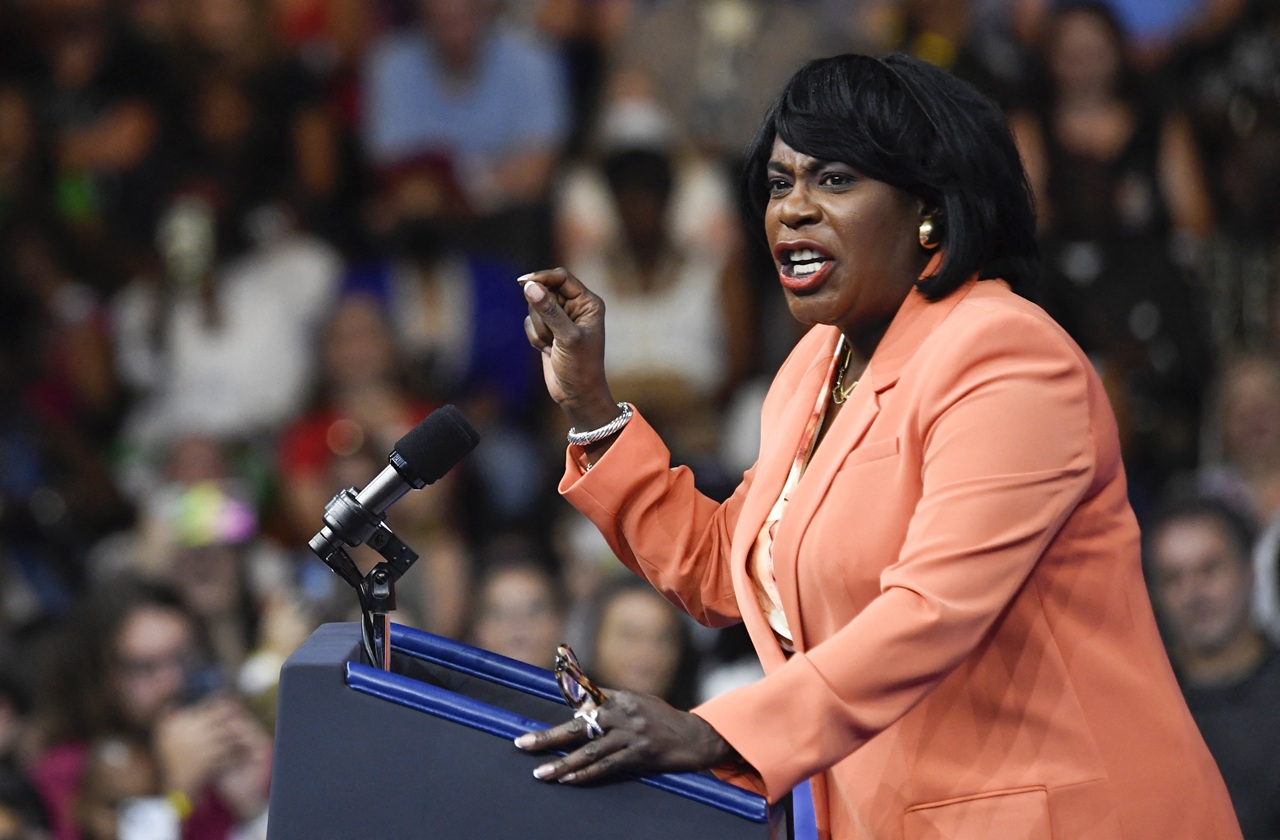
Renting on the edge of gentrification
From low-income undocumented families to bleeding-heart realtors, the side effects of gentrification are an everyday worry.
On average, Brenda Hernandez has moved every three years in Philadelphia. Some places she stayed in longer than others, but the decision to uproot and resettle was never exactly a choice.
A house collapsed next door to her first Philadelphia home at 21st and Federal Streets, and Hernandez’s family had to move. At her next place on the other side of Broad Street, a shifty landlord gouged the Hernandez family for quality-of-life repairs like water damage and broken heating systems, until finally they said no more. And more recently in 2012, the family packed up their boxes again when her landlord at 3rd Street and Washington Avenue jacked up the rent by $500 a month.
After that, they moved outside the city to Lansdowne where rents were more manageable and they could remain close to family.
“I don’t want to say I blame gentrification for this, but it’s true,” she said.
Almost every neighborhood east of Broad Street and south to Snyder Avenue has been “gentrified” to some degree, according to a report by Governing Magazine.
And while that report only outlines the broadest shape of gentrification — neighborhoods with higher incomes, better educations, and more expensive properties — those changes still roughly coincided with Hernandez’s lifetime in Philadelphia. To her, displacement is a firsthand reality.
But it’s hard to measure a social process as disputed and complex as gentrification. The term — derived from “gentry,” those with land and social status — has been used to describe the myriad ways through which monied people enter poorer, working-class neighborhoods, changing their economic and demographic texture. About 29 percent of Philadelphia’s low-income census tracts experienced it between 2000 and 2013.
The phenomenon and its effects are familiar enough. Between 2010 and 2012, the African-American population in gentrifying areas of South and West Philadelphia decreased by 29 percent, and by 22 percent in North Philadelphia, according to a report commissioned by the Philadelphia Coalition for Affordable Communities. No data was available on Latino and Asian populations.
The debate about gentrification in Philadelphia is extremely contentious, there are no easy solutions. Yes, renters are most vulnerable, while homeowners have an opportunity to integrate with newly monied areas. But even in that scenario, there are exceptions like Hernandez.
She was 8 years old when her family moved from Mexico City to Philadelphia. To this day, Hernandez, 23, is undocumented. So is much of her family, which she half-jokingly estimates to be “150 Mexicans” in South Philly. But buying a property remains out of reach. Even working multiple jobs, getting a mortgage isn’t an option for the undocumented.
And rents in South Philadelphia — especially east of Broad Street — remain untenable for working class Mexicans.
Juntos, the immigrant advocacy organization in South Philly, moved their office to 6th and Tasker Streets to be closer to the community. In a recent interview with AL DIA, Juntos’ director Erika Almiron said that many families have migrated south past Snyder Avenue to find affordable rent, or moved west across Broad Street.
Hernandez, like so many others, has lived on the edge of gentrification for the last 15 years. She says she gets enraged every time she reads an article that tries to refute the negative effects of gentrification.
She recently moved back to South Philadelphia into a small two-bedroom apartment that she shares with her boyfriend. It’s only a matter of time before she can’t afford it anymore, she says. At the end of the day, she knows even well-intentioned landlords can’t halt the changing market.
Keeping Kensington affordable
Everything is within walking distance of Pizza Brain.
At least that’s what the real estate postings would have you believe. Whether in El Barrio or Point Breeze, landlords are always selling properties based on their great location, even if it’s a bit of a stretch. Close to public transit! Minutes from Old City and Northern Liberties restaurants! Just a few stops from Center City! And for would-be buyers and renters anywhere north of Girard Avenue and east of Temple University’s main campus, don’t be surprised to learn Pizza Brain is in your backyard.
Sometime in the last three years, the “quirky BYOB eatery known for its pizza memorabilia” on Frankford Avenue became a landmark of gentrifying Kensington — even though the popular joint sits on the northern cusp of Fishtown. Let’s not get into the nitty-gritty of boundaries. To quote a 1975 neighborhood guide, Kensington is a “state of mind.”
But it's worth noting that Fishtown has become the most competitive place in the city for homebuyers, according to real estate website Redfin, with a median sale price of $245,000 — about $30,000 more than the citywide median. One-bedroom rent prices are on par with Center City. East Kensington and Olde Kensington have been catching up at an alarming rate.
Maria D. Mendez, a real estate broker and property owner, has been working in her hometown North Philly since the late 1990s. The $500,000 townhomes being sold on Trenton Avenue in the shadow of old factories? Mendez never thought she would see it in her life.
She bought her office building on the corner of Frankford Avenue and Cumberland Streets 10 years ago. She paid $150,000 for the first-floor commercial space and four apartments upstairs. People thought she was crazy. Now, she estimates its appraisal at $600,000.
While beneficial to investors, Mendez says it hasn’t been easy to keep rent affordable for her tenants.
Taxes shot up to $1,400 a year on a 600 square foot property she owns, she says, just because of new construction in the area. Add on top of that a $300 refuse collection fee for multi-unit buildings and the implementation of Actual Value Initiative (AVI) property tax increases — it’s hard to maintain.
She used to get by charging a fair $800 a month for the property. But if the mortgage on the property is $600 a month, the newfound taxes, fees, and necessary insurance barely cover the rental expenses. “I’m going to have to raise rents again,” she says.
“It’s going to be an exclusive area,” she went on. “Only a certain kind of people are going to be able to live (here), and it’s really unfortunate. People are getting pushed out.”
Mendez deals with all kinds of tenants, from upper-middle class young professionals to struggling low-income families. She currently rents a studio apartment on Frankford Avenue and Tioga Street for $535 a month — a steal for a single person. But the tenant is a family with a young child, and it’s the only thing they can afford. They struggle to pay the rent. It’s something Mendez sees more and more.
“People are going to eventually move out of the city for anything that’s affordable in decent neighborhoods,” she said.
In terms of real estate trends in the area, Olde Kensington is on the up. Mendez predicts that 19122 (the poorest zip code in the city) will see more action as the hot markets of Temple University and Kensington merge closer together. Mendez has been encouraging lower-income first-time homeowners to purchase in the Northeast. There are still opportunities the northwest part of Kensington — the area that some have dubbed “North of Lehigh” — where new development has only just begun.
By Spring 2017, the long-abandoned Orinoka Mills building just north of the Lehigh Avenue trestle will be converted into 51 mixed-income rental units. The ground floor will feature 1,000 square feet of retail space, including a coffee shop and office space for the New Kensington Community Development Corporation (NKCDC).
Fleeing to Fairhill and beyond?
The Fairhill neighborhood — which is somewhat contentiously known as the Badlands — is far from seeing the early signs of gentrification. But as a neighbor to Kensington, community leaders say they can feel the changing tides.
Fairhill has become a catchment for gentrifying neighborhoods just south, according to Maria Gonzalez of HACE.
Their latest community survey revealed that rentership has increased by 13 percent (861 new renters) in the last five years. As it stands, Fairhill is 57 percent renters compared with 43 percent homeowners.
Where are they coming? “From North Liberties, from Kensington, they’re migrating north,” Gonzalez said, though HACE did not have data to verify the exact percentage.
Of course, the increased rentership in neighborhoods on the edge of gentrification in Fairhill could be stemming from multiple factors. Data on the trend in these areas is scarce. And for those at risk, the well-known signs of gentrification are an easy target.
Conventional wisdom has always been that homeowners are better for a community. They are less transient, and have both a physical and economic investment in their neighborhood’s wellbeing. And while new studies suggest that Philadelphia’s renters are just as civically engaged as homeowners, Gonzalez feels there’s a fine line.
“It’s good and bad,” she said. “At HACE we do a lot of affordable rental housing for seniors and families, but having too many renters isn’t desirable, because you want more people having a stake in the neighborhood.”
So HACE is busy educating her community about the need to buy homes. HACE offers housing counseling and credit repair services for those who are concerned they might not be eligible.
Because while Hernandez’s family rents partially because of their immigration status, many families in Philly’s lowest-income neighborhoods like Fairhill have trouble qualifying for mortgages for a whole different set of reasons.
Like so many undocumented immigrants from Latin America, Hernandez and her family went to “El Norte” both out of survival and in search of new opportunity. Whether those people moving out of gentrifying neighborhoods in Philadelphia are looking for new opportunity, or simply economic survival, it may be too early to tell.










LEAVE A COMMENT: